Inspiration comes in many forms for photographers, such as light falling on an object, the time of year, look on a person’s face and others. Below is our list of 100 inspirational photography quotes along with images and links to their authors. We hope this large list inspires you and makes you take a moment to reflect on your photography. Continue Reading
Photodoto
Posts Tagged ‘Quotes’
100 Famous Short Inspirational Photography Quotes
How These 5 Photography Quotes Can Impact Your Photographic Practice
The post How These 5 Photography Quotes Can Impact Your Photographic Practice appeared first on Digital Photography School. It was authored by Megan Kennedy.

Techniques, theory, approaches, and equipment; there are many items that feed into the art of making successful images. Luckily, we have the authority of countless photographers to guide us!
In this article, we’ll look at five photography quotes and the insights we can glean from them.

1. No place is boring, if you’ve had a good night’s sleep and have a pocket full of unexposed film – Robert Adams

Robert Adams finds interest in the seemingly mundane. He shines a thoughtful light on the vastness of the wilderness and the hum of human expansion.
However, as Adams argues in one of his better-known photography quotes: It isn’t just a pocket of unexposed film that staves off boredom, but a night of quality sleep.
This is good advice for those of us who often burn the candle at both ends.
2. The camera is an excuse to be someplace you otherwise don’t belong – Susan Meiselas
The second of our five photography quotes comes from Susan Meiselas. Seeing into the veneer of everyday life, photographers such as Meiselas use the camera as a tool to investigate, motivate, question, connect, and share. The camera acts as a passport, as well as a reason to explore and push boundaries.
Today, a generalized knowledge of photographic technology means that most people are aware of a camera’s appearance and function. Nevertheless, those witnessing a photographer in action will frequently respond with interest or curiosity. With a camera in hand, a photographer is often viewed as a person guided by artistic and technical authority.
This gives photographers an entry point into the inner workings of an environment and its inhabitants.
3. Photography is a language more universal than words – Minor White

Minor White sought to make images that stood as “a record of something in front of the camera and simultaneously a spontaneous symbol…A photograph of the bark of a tree, for example, may suddenly touch off a corresponding feeling of roughness of character within an individual.”
Photographs, as we know, have many layers of meaning. With a conscientious approach to composition and execution, photographers can start a dialogue that transcends the boundaries of language.
In referring to the universality of photographic language, White encourages you to carefully consider the many ways in which a subject can be photographed. This hopefully prompts you to capture the subject with a deliberateness and mastery that goes beyond words.
4. Taking pictures is like tiptoeing into the kitchen late at night and stealing Oreo cookies – Diane Arbus
You’ve probably experienced the thrill of sneaking tasty morsels from the kitchen at a late hour: the anticipation, the apprehension, and then the reward.
But Arbus’s quote isn’t just about stealing food and photos; it’s about the driving force behind photography. Why does photography matter? What makes photography so compelling in the first place? And what makes us keep coming back for more?
Establishing why a photographer does what they do can be tricky. There are many different reasons a photographer might take up a camera.
Nevertheless, developing a good grasp of the motivations that spur on your own photography can help you find direction, especially in the event of a creative block.
5. Searching is everything – going beyond what you know. And the test of the search is really in the things themselves, the things you seek to understand. What is important is not what you think about them, but how they enlarge you – Wynn Bullock

Canon 5D Mark II | Canon EF 24-105mm f/4L | 1/20s | f/4.0 | ISO 200
It was during a tour in Europe during the mid-1920s that singer Wynn Bullock first encountered the artworks of Man Ray and László Moholy-Nagy. Recognizing photography as a powerful vehicle for creativity, Bullock bought a box camera and began taking pictures himself.
Interested in art as well as psychology, physics, and philosophy, Bullock constantly sought to build on his own photographic practice. Many of Bullock’s photography quotes emphasize personal growth, affirming the need for deliberation and mindfulness.
Encouraging photographers to absorb as much as possible from every photographic subject and experience, Bullock’s words instill a sense of constructive curiosity in photographers that expands personal practice and furthers the medium overall.
Conclusion
There are so many photography quotes that have been recorded throughout history that it’s nearly impossible to list them all.
Nevertheless, reading and absorbing the advice uttered by pioneering photographers can help you understand the minds that helped shape the trajectory of photography!
Now over to you:
Do you have a favorite photography quote? Share it in the comments below!
The post How These 5 Photography Quotes Can Impact Your Photographic Practice appeared first on Digital Photography School. It was authored by Megan Kennedy.
3 Quotes for the Creative Photographer
Most of us photographers struggle with our creativity. As time goes on you’ll likely experience fewer moments of passionate inspiration and longer periods of hard work and creative dryness.
It was during a period of creative dryness in my photography business that I discovered a whole breed of photographers who had been able to express their creativity in surprising ways.
They brought every part of their life to their photography, found beauty in unlooked-for places, and got in over their heads. Their ideas were just what I needed to breathe new life into my own photography.
Let me share with you three quotes that will help you understand yourself as a creative photographer.

It’s liberating as a creative photographer to forget about making money or comparing yourself to other photographers and just go play with your camera. For me, it’s climbing sand dunes or wading through water at sunset. It brings me to life.
1. You Bring Your Whole Self
“You don’t make a photograph just with a camera. You bring to the act of photography all the pictures you have seen, the books you have read, the music you have heard, the people you have loved.” – Ansel Adams
When you first became a photographer you likely focused on finding the perfect camera and lenses. For a while, it was all about chasing gear. But in the end, the gear doesn’t satisfy. Unless it helps you expand your creative horizons it becomes a worthless dust collector sitting on a shelf somewhere.

These are my favorite cameras to use. The Fuji x100s is perfect for everyday life. I’m nostalgic about the photo quality of the iPhone 4s. It was the first phone camera I ever used. The Fuji XT1 along with a portrait lens and silent shutter mode is perfect for portraits.
You probably tried your hand at copying what you saw on Pinterest or other photo sharing groups. I bet that once you were successful you got bored and moved on quickly.
Gear and gimmicks don’t satisfy you. In fact, you’re more likely inspired by the books you read, even though they are non-visual because they fire up your imagination.

Two winters before this photo was taken, my imagination had been fired up after reading “The Wind in the Willows.” But I had no idea how to capture that in photos. That is until one spring when the bay that we live on overflowed its banks and took over our yard! I bought a dingy for my son, put on my chest waders and spent the evening in and on the water. Ratty would be proud of us.
The creative photographer brings to their work their whole life, their whole selves. That usually includes a whole host of other creative endeavors like music, painting, writing, or acting, even if you pursued them at different moments in life.

Though I loved photography as a kid, I was a musician before I became a photographer. Knowing what it’s like to perform and connect with the audience, I always look for those engaging moments when I photograph bands. Is there anything more engaging than Alice Cooper in a straight-jacket staring down the barrel of your lens?

An Alice Cooper performance goes beyond the music and incorporates drama as well. The story that is played out for the audience is part fiction and part biographical. Alice brings everything to the stage, including his past battles with alcohol, showing the audience and fellow musicians what can be accomplished in life and art.
2. Making Beauty Out of Chaos
“I don’t just look at the thing itself or at the reality itself; I look around the edges for those little askew moments – kind of like what makes up our lives – those slightly awkward, lovely moments.” – Keith Carter
As a creative photographer, you’re often going to feel like you don’t fit in. You’ll likely find it hard to commit to one type of photography for the rest of your life (or as a business).
Here’s one idea that might characterize everything you photograph; beauty out of chaos.
Creative photographers are often at the fringes, on the edge of chaos and order, in unpredictable situations, trying to make something beautiful in difficult situations.

Many of us deeply resonate with Carter’s words as we “look around the edges for those little askew moments.” While it’s natural to photograph the happy, predictable moments of life, I’m most at home looking around the edges. When a little guy “acts up” he’s taken out of the game to the edges for a time-out. But aren’t these the defining moments of life? I was drawn by the boy’s face and his inability to look his father in the eye.

The situation was irresistible to me as a photographer. It was a “theological” moment and I was fascinated by the boy’s unwillingness to look his father in the eye. He expressed himself through his hands and fingers instead.

I love that even the dirt on his arm speaks to his guilt. You can’t plan these moments, you just appreciate them as they come.
You’re likely drawn to “the real,” not being satisfied with mere poses but what happens between the poses, at the edges of a photo session – those “slightly awkward, lovely moments.”

No parent in their right mind would allow their kids to play in the curtains. Those curtains will end up a complete mess. But, even for just a moment, I saw beauty in that mess.

Sometimes those moments in the window are more serene. I couldn’t help but notice afterward that the curtain ties were “slightly askew.”
3. You’ve Got to Get in Over Your Head
“I realize more and more what it takes to be a really good photographer. You go in over your head, not just up to your neck.” – Dorothea Lange
With the pursuit of the perfect camera behind you (happy to use whatever camera you’ve got on hand), and Pinterest a distant memory, you bring everything you’ve got to your photography. But even when you find yourself up to your neck, you’re still holding back.
There’s nothing to force your creativity quite like walking into a situation that puts you in way over your head. You’ll be forced to figure out what to do at the moment.

I still remember the first time I took the stage as a musician. It was a high school talent show on a makeshift stage in the cafeteria. All I could think was, “How did I get myself into this?” I knew I wasn’t qualified in any way to be on that stage (even though it was just a bunch of tables pushed together). But the moment took over and I knew I was made for the music.
To this day, I look for raw emotion when photographing musicians.
I daresay that, for most of us, going in over our heads means overcoming ourselves. Overcoming our social anxiety, fear, and laziness. While a little social anxiety, introversion, or laziness can kill your creativity – it can also fuel it.
Successful creative photographers talk about how they challenged themselves through their fears and assumptions and constantly embraced constraints that forced them to grow as people and as photographers.
What do you look like as a creative photographer?
I love hearing from you. Which ideas do you resonate with and what do you look like as a creative photographer? Let’s chat in the comments below.
The post 3 Quotes for the Creative Photographer appeared first on Digital Photography School.
Wise Words: Famous Photography Quotes and Their Relevance Today
In the early years of my study, I remember leaning over the photography department work bench, trying not to look disheartened, as my lecturer scribbled notes on the glossy finish of yet another proof sheet in red marker. +1, -5, underexposed, out of focus, crop, the irrefutable question mark with an arrow pointing to a light leak of frustratingly mysterious origin, or worse – the dreaded RESHOOT.
At the time, I was frustrated with my inconsistency both behind the camera and in the darkroom. My tutor’s favorite saying, “Your first 10,000 photographs are your worst” formed in my mind an image of piles and piles of failed photographs stacked up like an impassable mountain before me.
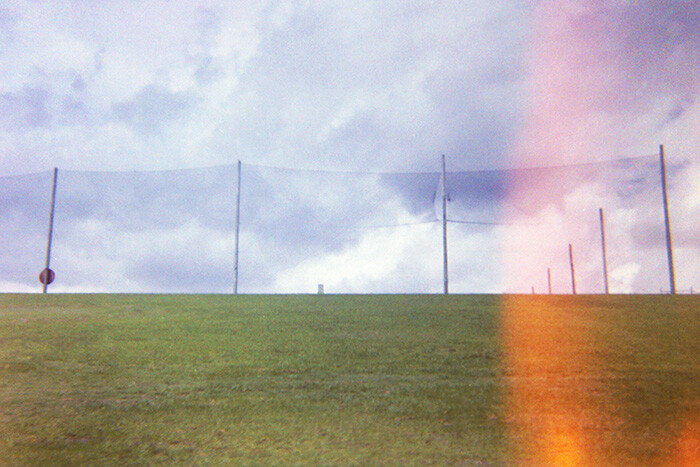
Light leak from a film camera.
It was only later in my career that I realized that what my teacher was saying was not a criticism, but her way of encouraging me to take advantage of the opportunity that the worst 10,000 provided. A foundation for the photography I hoped to produce in the future. Without those 10,000 duds my photographic feet would be steeped in the muddy waters of ambition with no way to see my visions through to a complete body of work.
Those initial 10,000 photos – many of which I have kept stacked in visual diaries and negative sheets to look back on fondly – provided a solid launching pad for my photographic practice and the impetus to advance. Nowadays I find myself delving into the words of photography masters for inspiration, tried and true technical advice, and occasionally a kick in the butt when motivation is lacking.
Henri Cartier-Bresson
“Your first 10,000 photographs are your worst”

Be aware and ready for anything.
The inventive work of Henri Cartier-Bresson in the early 1930s opened up the creative possibilities of photography forever. Though he is known for his mastery of street photography, Cartier-Bresson was also known for his patience. The mythology of Cartier-Bresson’s “decisive moment” suggested that most of the photographs he took from the very start of his photographic career were taken with a single shot, at the precise instant of opportunity. In reality however, Cartier-Bresson honed his skill by making the most of a potential moment, sometimes shooting 20+ images of one scene. His single greatest images were preceded by the first 10,000 images that fell by the wayside.
Elliott Erwitt
“I always make it a point to carry a camera with me at all times…I just shoot at what interests me at that moment”
In photography, the whole world is a canvas. The special agony reserved for an unarmed photographer witnessing the perfect shot pass before their eyes, is something we have all experienced. Making a habit of always carrying a camera with you (beyond a camera phone, everyone has those!) is rewarding, and makes sure you will never suffer the regret of wishing you had.

I personally keep a disposable (play) camera with me if my larger camera is too bulky. Not only do the plastic disposables ease the anxiety of being camera-less, they afford a less formal quick-draw camera for street photography. They also provide a refreshing aesthetic, and the occasional surprise. I always enjoy the odd incidental light-leak mark, a quirk of cheaper cameras that adds a real incidental feel to the image. Another upside is disposable cameras are inexpensive and (speaking from experience) they are also a bit bouncier if you drop them.
Robert Mapplethorpe
“The more pictures you see, the better you are as a photographer.”
Rainy shoots in the wilderness, urban exploration, and late night post-processing, means that often photography can be a lonely experience. But taking the time to check out other photographer’s work – from the past and present – can be a great way to get motivated and to immerse yourself in the photography headspace. Studying other artists’ work and dissecting their techniques can help you improve your own work or allow you to ease up a little and be open to experimentation.
If you usually take photographs of bustling subjects with loud, vibrant colors, try focusing on black and white minimalism for a change. Asking for advice, or perhaps even sharing your own insights, is a great way to build relationships with fellow photographers too.

Mary Ellen Mark
“Learning how to use different formats has made me a better photographer. When I started working in medium format, it made me a better 35mm photographer. When I started working in 4×5, it made me a better medium-format photographer.”
Taking the time to shake up your photographic practice is not only a liberating experience but an educational one. As memory cards get bigger, faster, and larger, the temptation to shoot rapid-fire and hope for the best is strong. When shooting with a film camera, however, you are restricted by the limited number of frames on the roll as well as developing costs. As a result, you will immediately start thinking much more about composition, subject matter, movement, and the technicalities of composing the shot correctly in terms of exposure, aperture, ISO, etc.
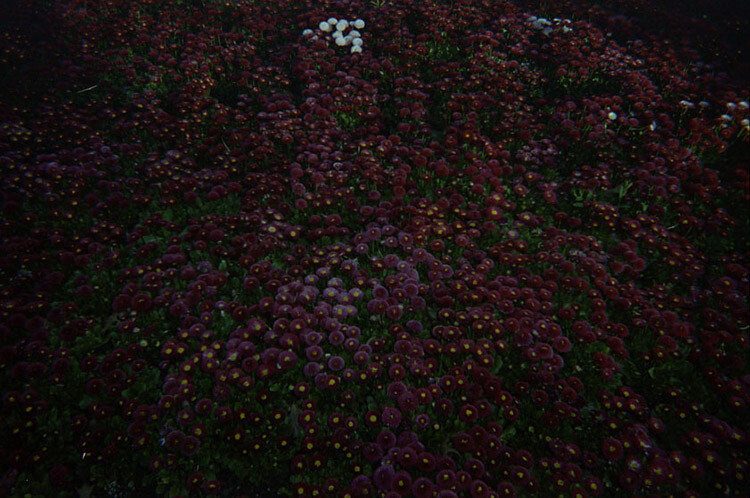
Shoot with film for a different experience.
Taking the time to step back and focus on your craft will no doubt improve your technique and help you to slow down and reconnect with the process of capturing a great photo.
Imogen Cunningham
“Which of my photographs is my favorite? The one I’m going to take tomorrow.”
While it can be exhausting at times, maintaining the hunger for new and better photographs is what drives us photographers to keep going. We’re never satisfied, we never stop learning, and we never stop shooting. As with any artistic endeavor, creativity comes in waves. But to ride the good waves you’ve got to keep surfing.
Keep striving for that great shot, and when you get it, strive for the next one. You never know what’s coming, so be prepared!
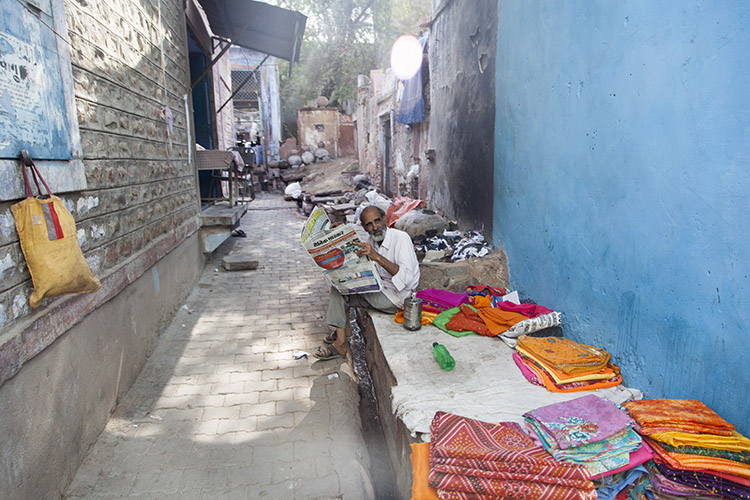
Ansel Adams
“You don’t take a photograph; you make it.”
The word take is often used to describe the process of capturing an image. But the difference between assuming an image is simply there to be taken and taking control of the image are two completely different things.
We all unconsciously make decisions about how to take a photo in terms of location, weather, time of day, etc., based on what catches our eye. So we are already exerting a lot of control over our photography. By being more aware of detail, the formal technique and execution of a photograph will invariably result in better considered and aesthetically pleasing images, which at the very least saves time on editing later.

Do you have any favorite quotes from photographers past or present? What can we take from them and apply to our own photography? Please share your thoughts in the comments below.
googletag.cmd.push(function() {
tablet_slots.push( googletag.defineSlot( “/1005424/_dPSv4_tab-all-article-bottom_(300×250)”, [300, 250], “pb-ad-78623” ).addService( googletag.pubads() ) ); } );
googletag.cmd.push(function() {
mobile_slots.push( googletag.defineSlot( “/1005424/_dPSv4_mob-all-article-bottom_(300×250)”, [300, 250], “pb-ad-78158” ).addService( googletag.pubads() ) ); } );
The post Wise Words: Famous Photography Quotes and Their Relevance Today by Megan Kennedy appeared first on Digital Photography School.
8 Quotes From Master Photographer Ansel Adams and How You to Apply Them to Your Photography
The technology of photography has been evolving at a very rapid rate. Most of our cameras are almost obsolete by the time we purchase them! But one thing about photography hasn’t changed over the years and that is the art of photography. We can learn so much about the that from the masters of yester-years. Ansel Adams was one of these great masters, best known for his iconic black and white images of the American West. Let’s review some quotes from Mr. Adams and consider how we might apply them to modern day photography.
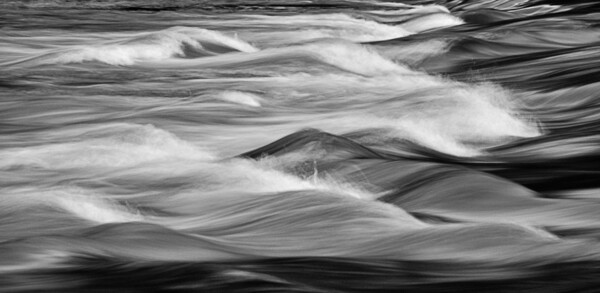
This image by Bruce Wunderlich was part of a digital display that ran alongside the temporary exhibition, Ansel Adams: Photography from the Mountains to the Sea on at the National Maritime Museum, Greenwich from 9 November 2012 – 28 April 2013.
“Expressions without doctrines, my photographs are presented as ends in themselves, images of the endless moments in the world.”
You surely have heard the expression, “A picture paints a thousand words.” Ansel thought of his images as expressions of how he felt in the moment he released the shutter. These expressions require no words of explanation. He was also quoted as saying “A true photograph need not be explained, nor can it be contained in words.” Likewise, we should look for moments in the world around us worthy of a captured image, which affects us emotionally before we click the shutter.
“Twelve significant photographs in any one year is a good crop.”
It is always a good idea to keep your portfolio up-to-date. A yearly inventory of your work, examining what you captured well and what you need to improve upon will help keep you focused on your artistic expressions. Photographers with digital technology have the tools to take many more images than Adams could with film and plates, so here’s a suggestion: Perhaps the number 12 suggests aiming for one memorable image each month. Take these most significant images and create a calendar featuring your art that you can give to friends. Regardless, keep your favorite images, your “crop”, organized and ready to share.

2014 “crop” presented in a 2015 desk calendar.
“Sometimes I do get to places just when God’s ready to have somebody click the shutter.”
One favorite story about Ansel Adams centers around the circumstances of one of his most iconic images, “Moon rise over Hernandez”. As he was driving from what was described as a very unsuccessful day of shooting in New Mexico, suddenly Ansel pulled the car off the road when he saw the now famous subject. The light was changing so quickly that he was only able to get one exposure before the light was gone. Never think a day of shooting is a waste, that iconic image might just be around the next bend.
“There are no rules for good photographs, there are only good photographs.”
In a statement for a 1932 exhibit in San Francisco, Ansel listed his two “rules” of photography:
- The completed image must directly reflect how the subject appeared in the camera.
- He had to see the finished photograph in his mind before the shutter was released.
One of the most important things Ansel Adams left with us was this principle of pre-visualization. This mental vision of what he was expecting to communicate with the images he created is what makes them so prominent even today, some three decades after his death. We see too many photographers out in today’s world just aiming and shooting, not taking the time to think about the subjects before them and how the resulting image will speak to (or not) the viewers of the image.
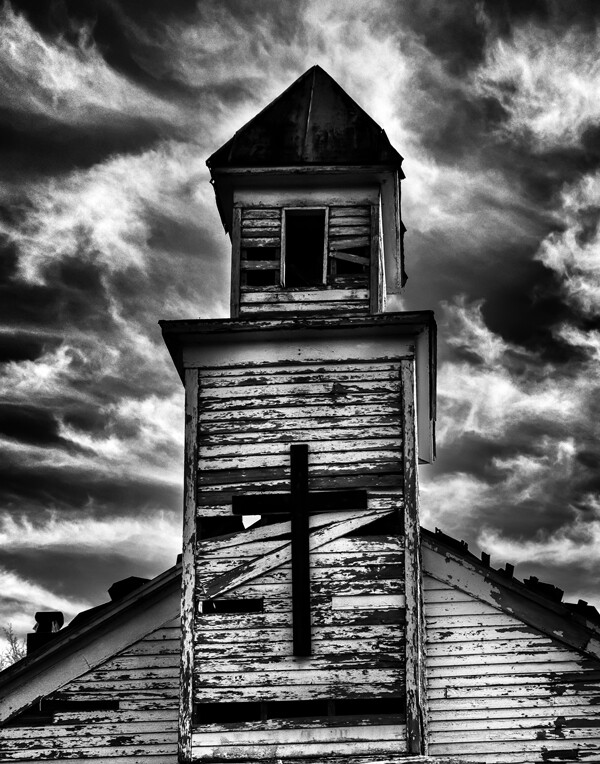
Using Ansel’s pre-visualization method when approaching this shot, I immediately visualized this image as a black and white. By adding a polarizing filter, I was able to make the blue sky more saturated which helped later during processing to create a dark and contrasting sky. I also intentionally underexposed the image to ensure that the white boards of the run-down church would not appear too bright, to help convey the abandoned feeling.
“Ask yourself, “Why am I seeing and feeling this? How am I growing? What am I learning?” Remember: Every coincidence is potentially meaningful. How high your awareness level is determines how much meaning you get from your world. Photography can teach you to improve your awareness level.”
What a powerful quote! “Every coincidence is potentially meaningful”. To develop the creative eye that it takes to create great photos we need to be on the constant lookout for unexpected opportunities. So, must we carry our camera at all times? How many times have you come across a great scene only to find you do not have your camera ready and available? It happens to all of us, but don’t get caught up in the fact that you don’t have your camera with you. Instead, use this opportunity to think about the shot and visualize how you would have shot it, how you would compose it, and what camera settings and filters you might have used to capture the scene. Even though you may have missed the shot, you can use this as a learning experience to be prepared in the future.
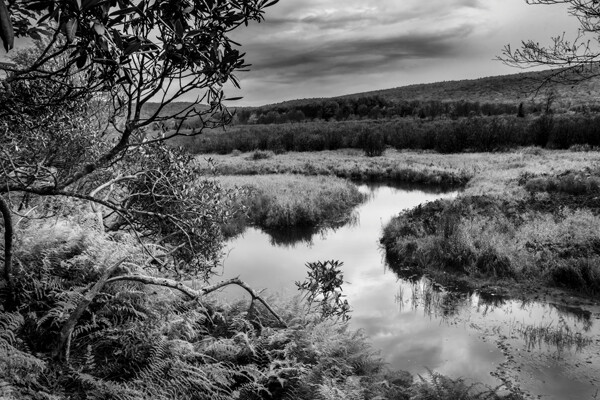
By studying the images of great photographers of the past and present we can learn how to approach our own images. This image, captured in the Canaan Valley Resort State Park in West Virginia, reminded me of Ansel’s image The Tetons and Snake River.
“The machine-gun approach to photography – by which many negatives are made with the hope that one will be good – is fatal to serious results.”
With the new digital age of photography it is so easy to take the “spray and pray” approach to photography, but we must learn to slow our approach and think about every piece of the image that we are capturing. One way to take a more deliberate approach with a landscape shoot is to place your camera on a tripod, which will allow you to concentrate more on the composition of your image. There are plenty of situations where the machine-gun approach to photography can be helpful, for example, action subjects such as sports or wildlife, but in other areas this approach can be fatal.
“A photograph is never finished until I burn the corners.”
Ansel considered it important to keep the viewer’s eye in the frame of his images, so he would burn (darken) any light areas near the edges of the image. These adjustments were quite time-consuming and tedious to produce in the darkroom of Adams’ era. Today, however, we can easily accomplish these steps in Photoshop or Lightroom. Be careful not to overdo it, as these changes should be made in a way that is completely imperceptible to the viewer of the image.
“I am sure the next step will be the electronic image, and I hope I shall live to see it. I trust that the creative eye will continue to function, whatever technological innovations may develop.”
Many fans of Adams’ photography ask, “Would Ansel Adams have shot digital?” This quote indicates he would have! Ansel was never overly concerned about the process of taking photos as much as he was about the creative experience and how a photograph made him feel. Ansel Adams would not only be shooting digital, but also he would be a Photoshop guru, probably working closely with Adobe to develop and improve the photographer’s experience.
Where do we go from here?
So in conclusion, has photography changed over the years? Yes, the process has changed, but the art of photography remains the same. By studying the guiding principles of great photographers of previous generations, like Ansel Adams, we can sharpen our skills to become the best photographers of our day. Please leave a comment below: What is your favorite photographer’s quote and how has it inspired you?
googletag.cmd.push(function() {
tablet_slots.push( googletag.defineSlot( “/1005424/_dPSv4_tab-all-article-bottom_(300×250)”, [300, 250], “pb-ad-78623” ).addService( googletag.pubads() ) ); } );
googletag.cmd.push(function() {
mobile_slots.push( googletag.defineSlot( “/1005424/_dPSv4_mob-all-article-bottom_(300×250)”, [300, 250], “pb-ad-78158” ).addService( googletag.pubads() ) ); } );
The post 8 Quotes From Master Photographer Ansel Adams and How You to Apply Them to Your Photography by Bruce Wunderlich appeared first on Digital Photography School.
15 Influential Photographers Share Their Quotes for Inspiration
Pursuing a career doing something you really love could be a terrifying thing, so people often look at the ones who already “made it” in their field as a source of inspiration. Having a chance to hear famous photographers talk about how exactly they made it and what it costs to be a successful photographer inspires us to work harder Continue Reading
The post 15 Influential Photographers Share Their Quotes for Inspiration appeared first on Photodoto.
[MODIFIED] Google Search Engine – Look for Stock Quotes and Charts
Search for stock quotes, charts, and related company news and information using the Google search engine.
To search for stock quotes using Google, you don’t have to search for the phrase “stock quotes” or “online stock quotes” if you know the company’s stock exchange abbreviation. Just enter the symbol directly into Google’s search box, such as:
* AAPL – Apple…
Read more at MalekTips.
New Computer and Technology Help and Tips – MalekTips.Com
Microsoft Word 2010 – Stop the Not So Smart Quotes
Prevent Word 2010 from converting your quotes into those that don’t always paste well into other applications and documents.
Microsoft Word 2010 has a tendency to perform a great deal of correcting as you type, useful if you keep typing in teh instead of the (unless you really want to type in teh Internets, which in this case Word can be annoying). Among this happily-correcting behavior is the changing of quotation marks to “smart quotes”, ones where the quotes slant at an angle.
Unfortunately, if you copy and paste documents containing “smart quotes” into other applications, such as web page editors, these quotes may not appear as desired. Worse, you might paste them into an HTML document, notice that the quotes look fine on screen, but users with other browsers / operating systems may see strange characters instead of the quotes. Definitely not so smart… So, how can you disable them?…
Read more at MalekTips.
New Computer and Technology Help and Tips – MalekTips.Com
You must be logged in to post a comment.